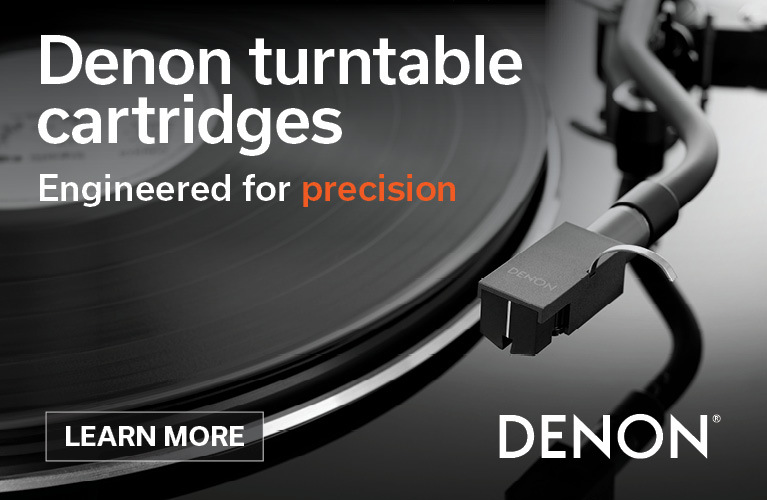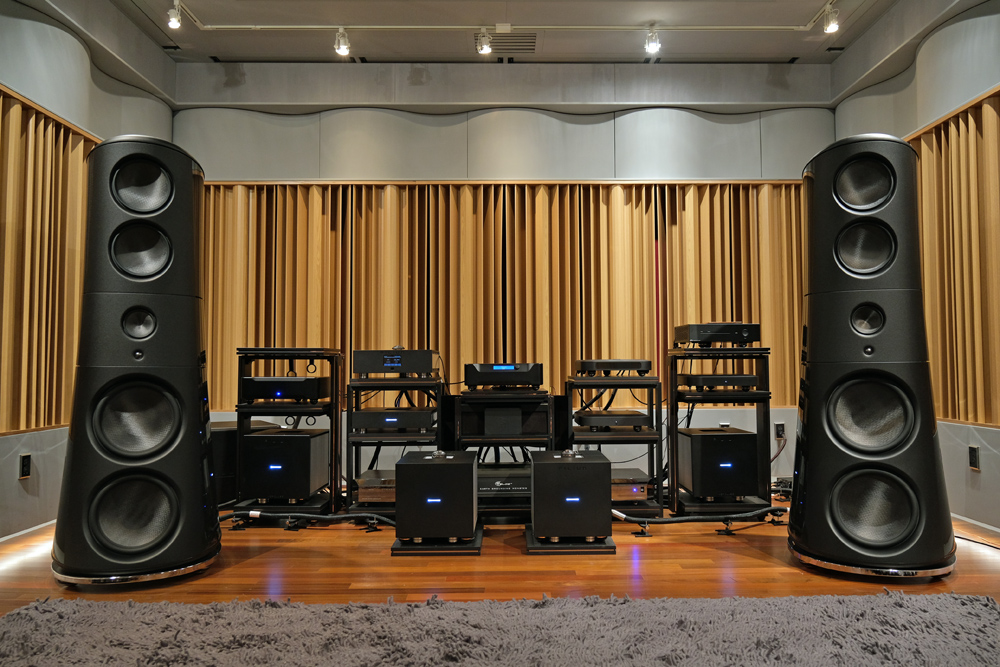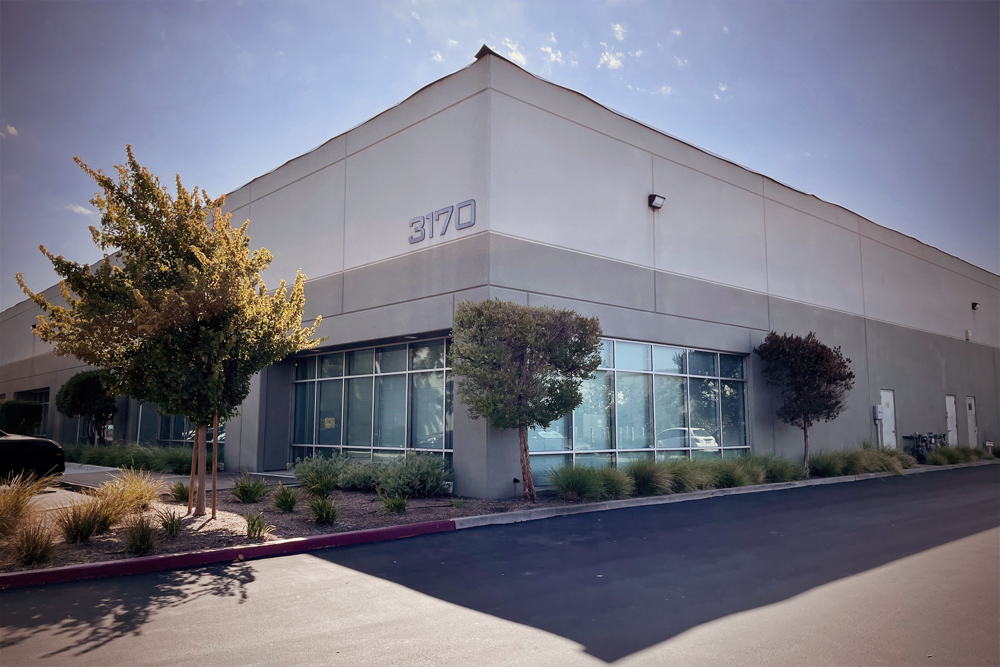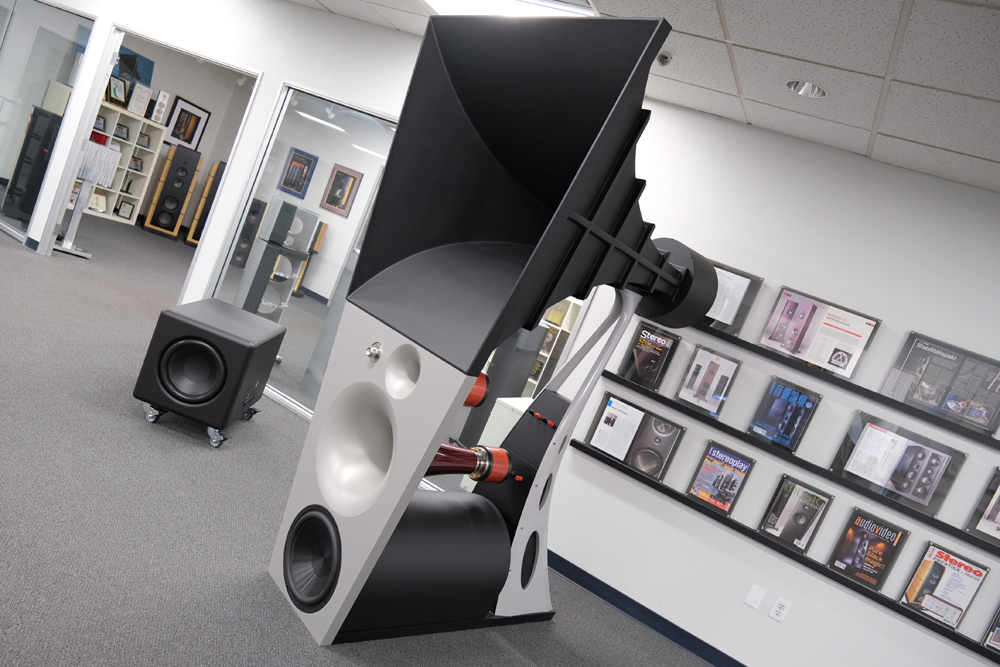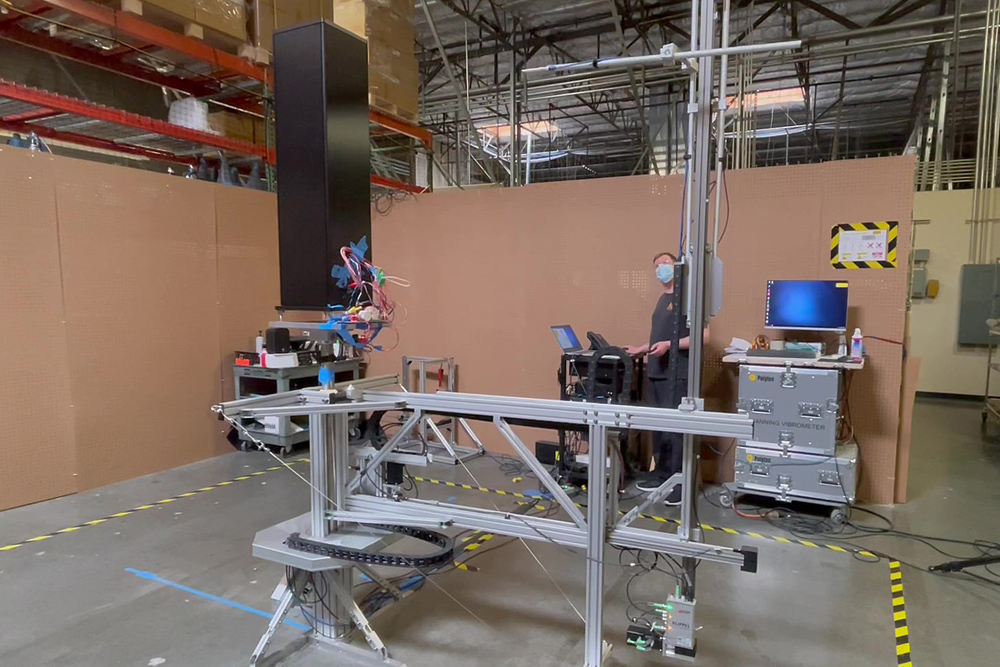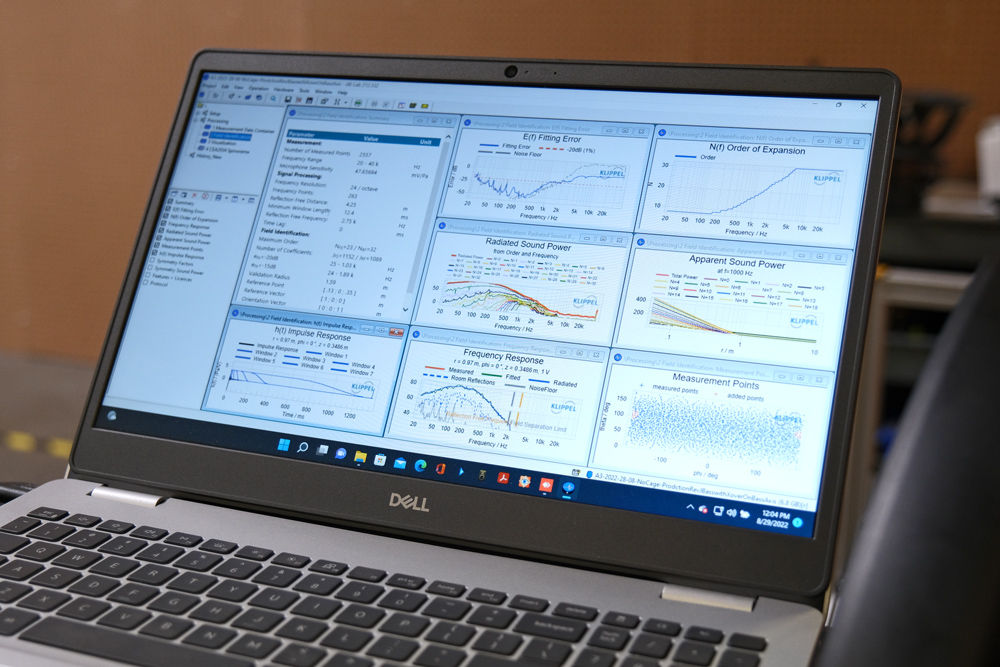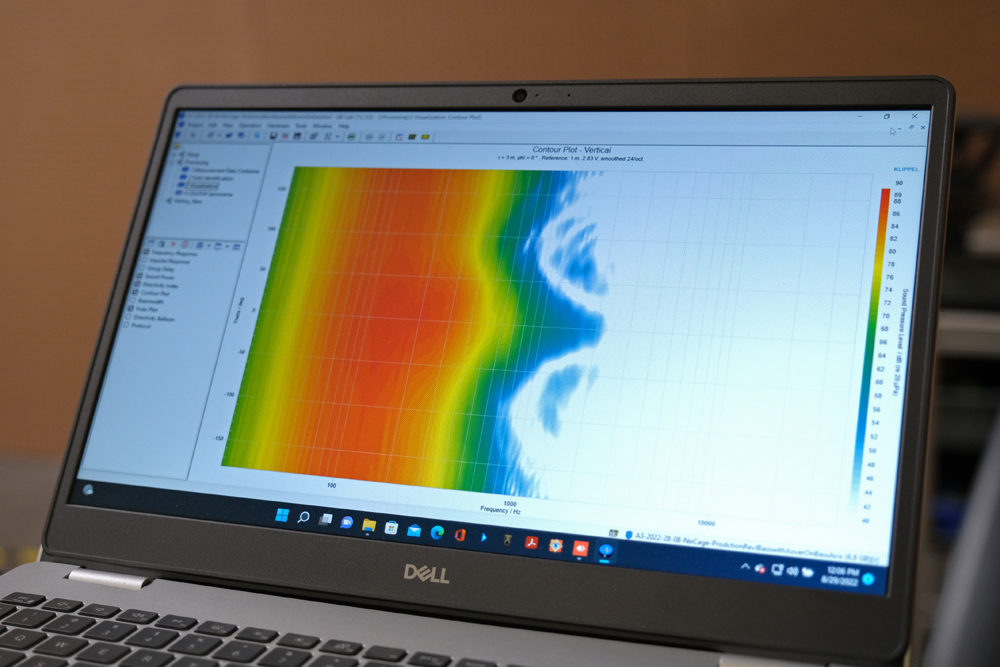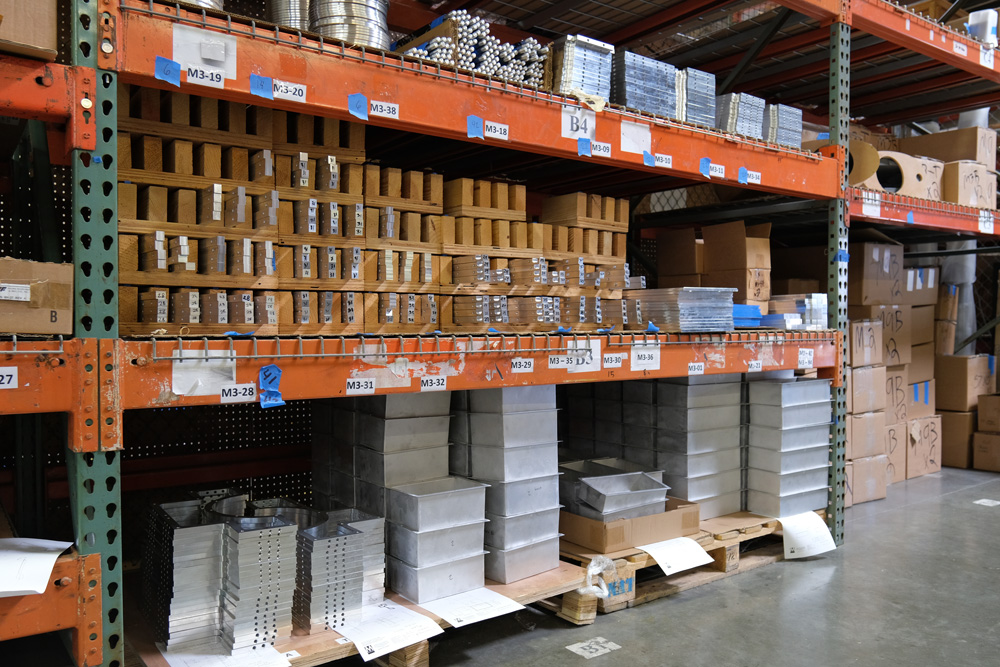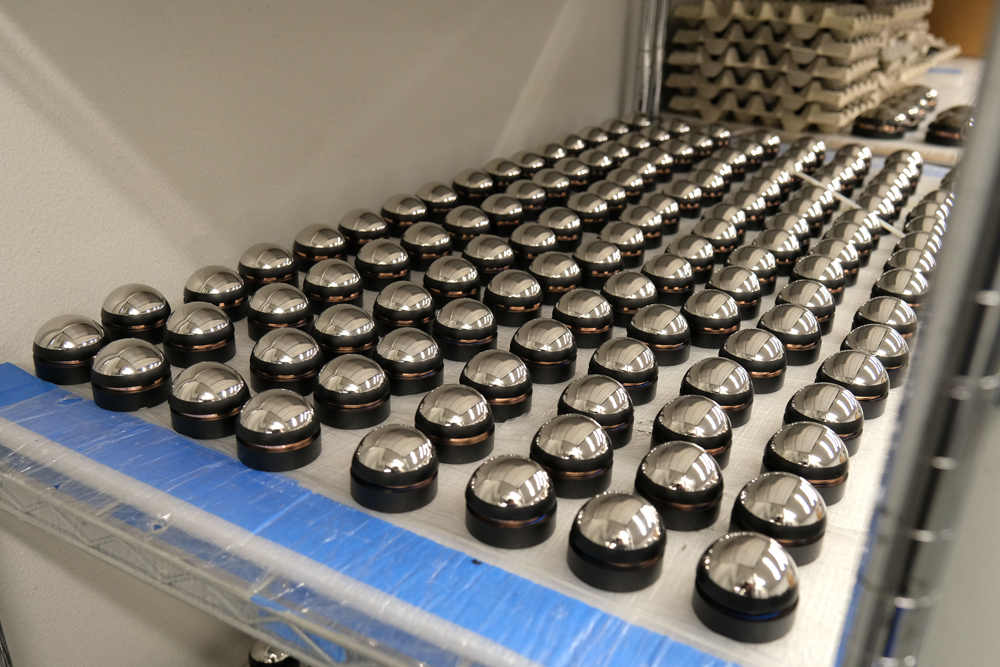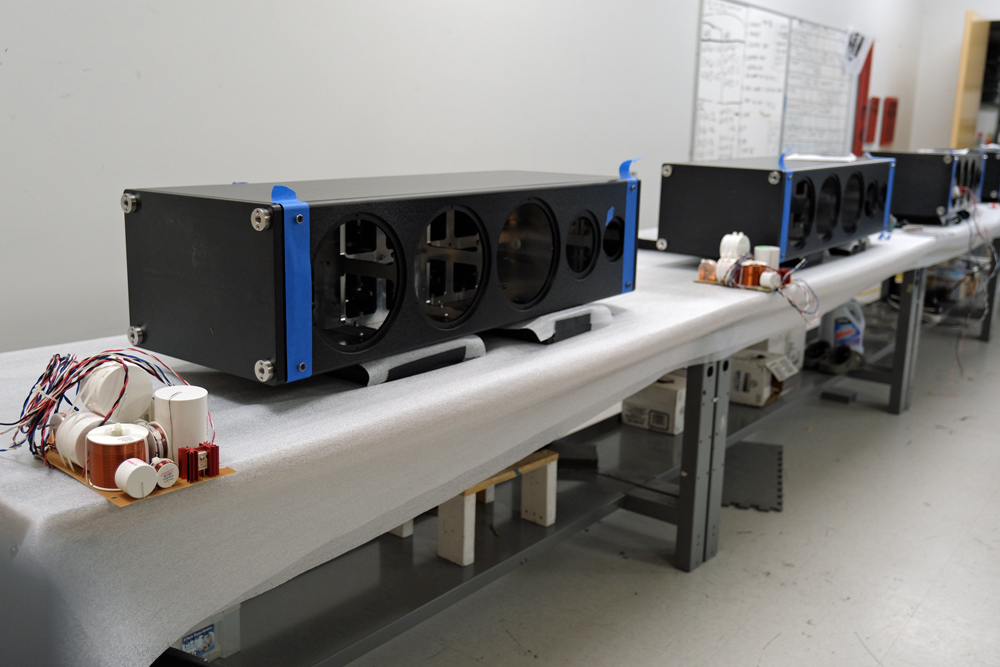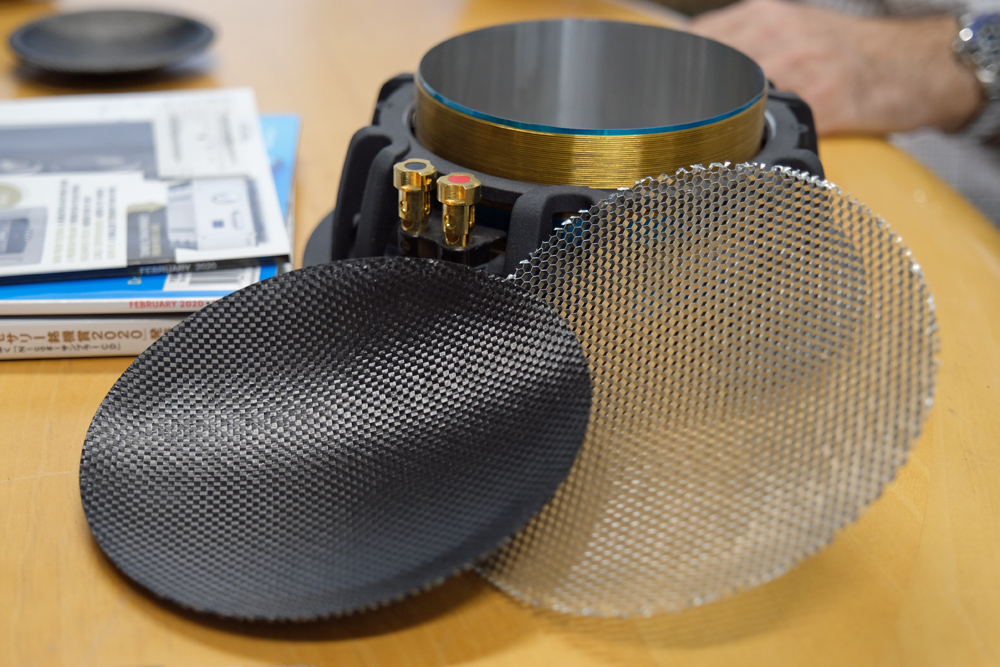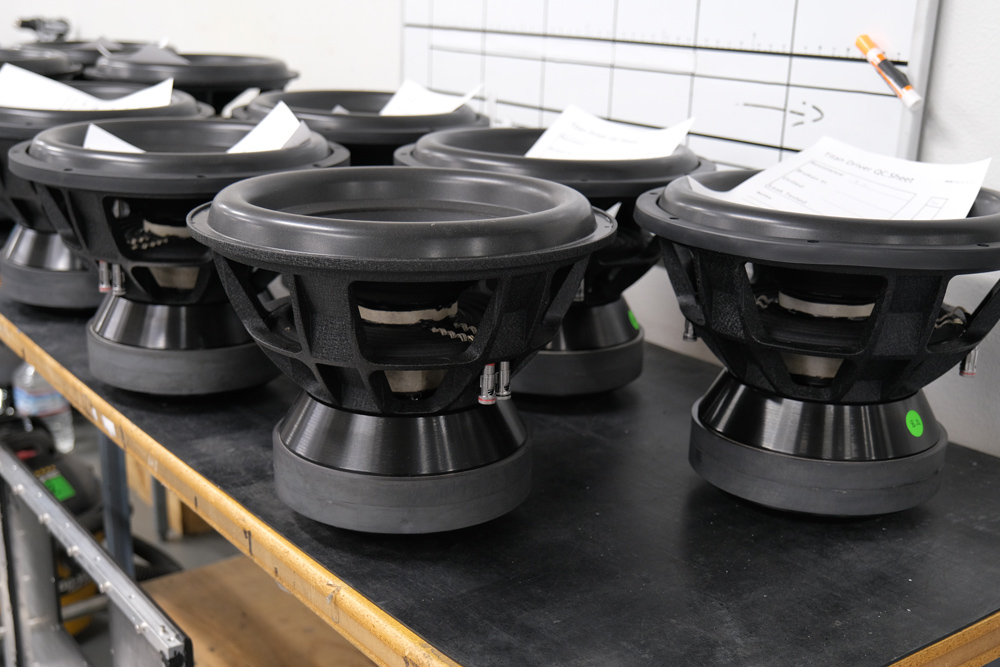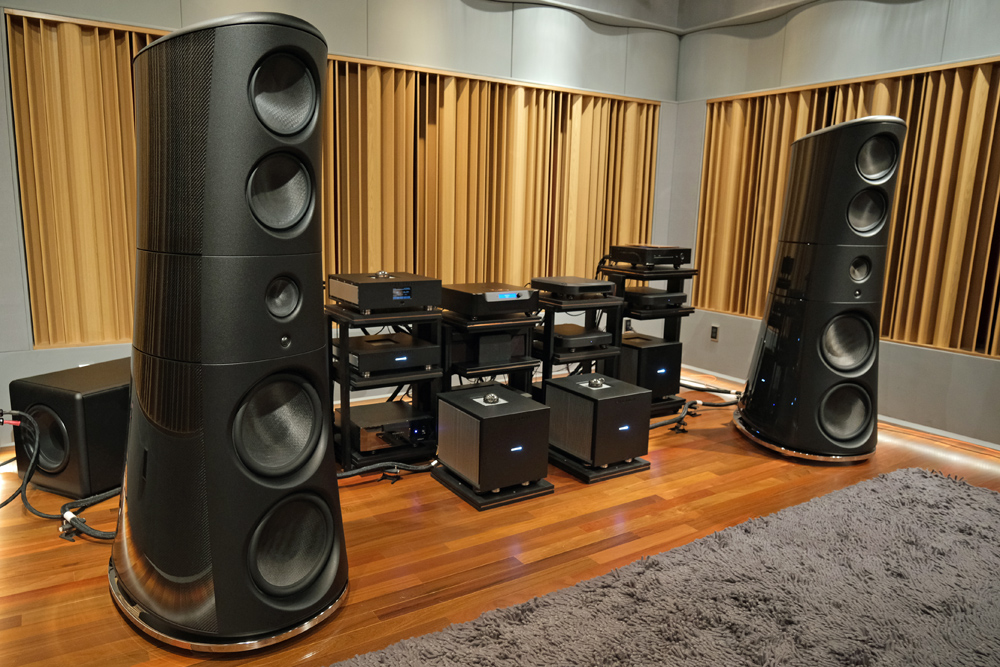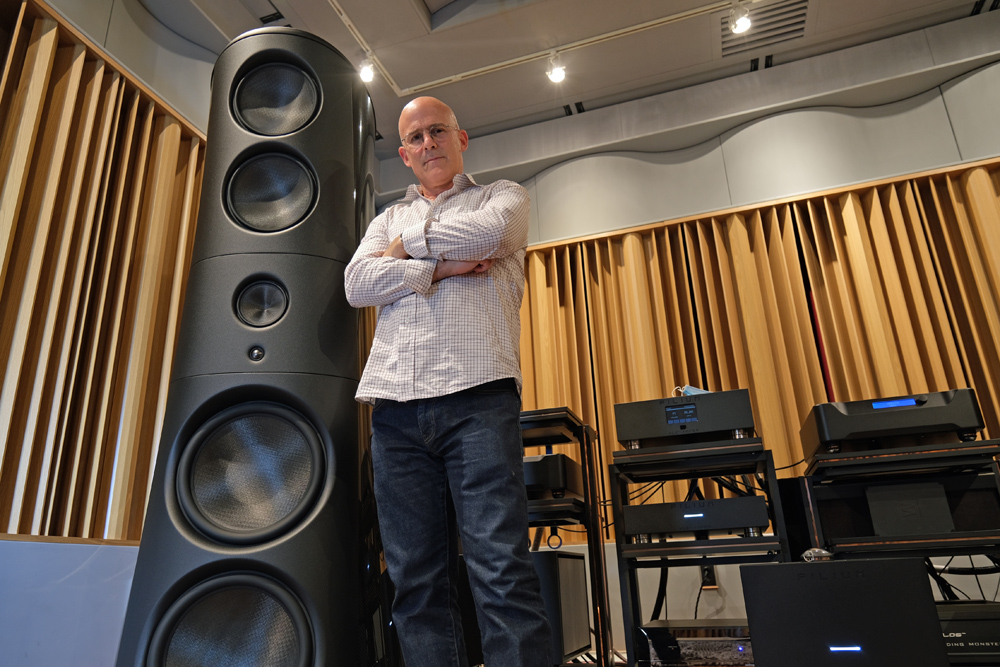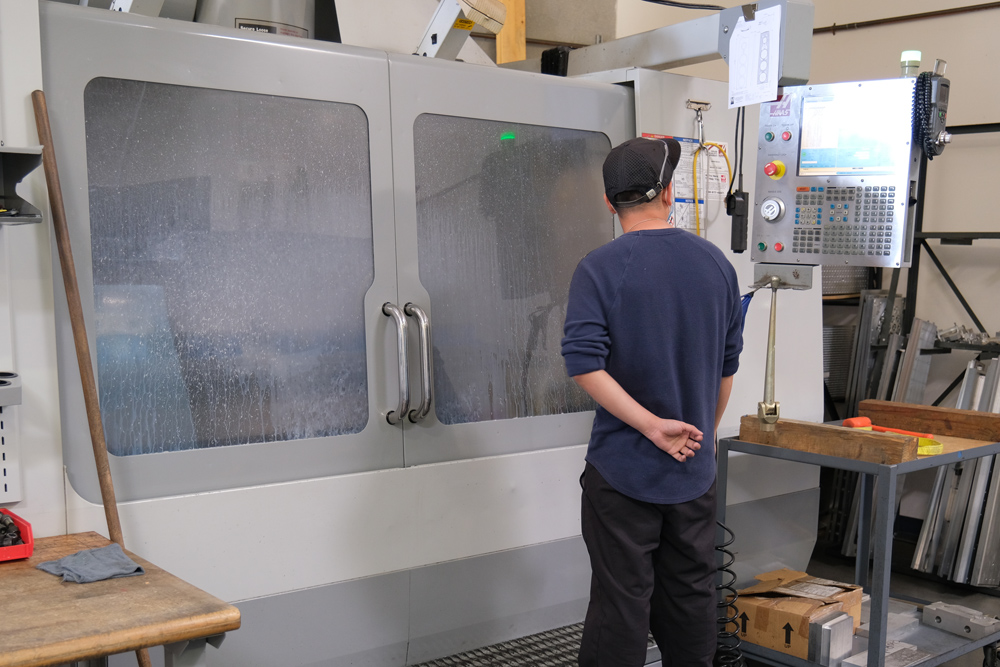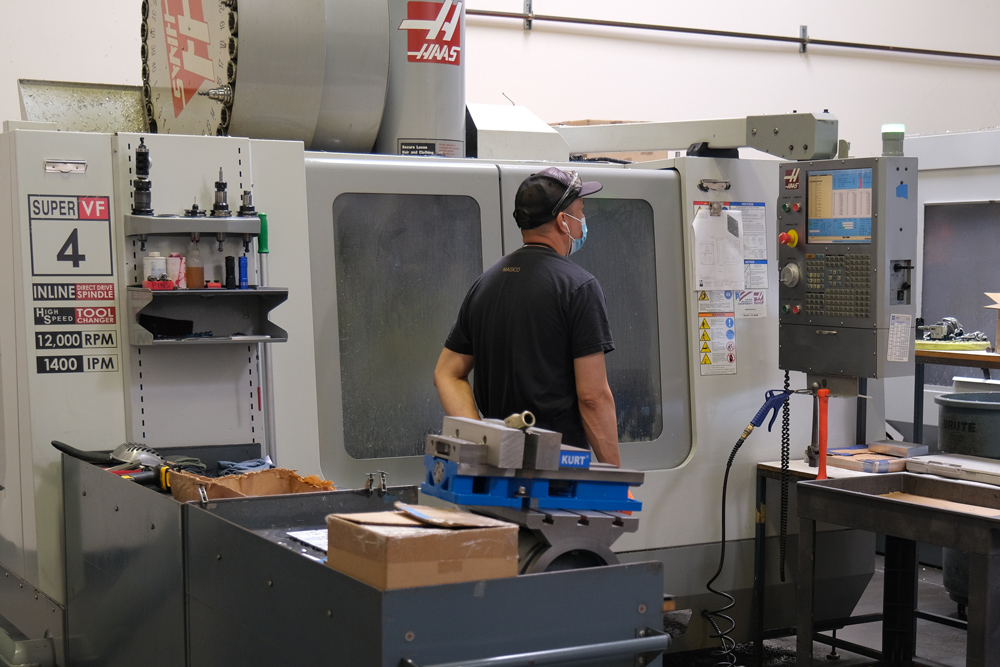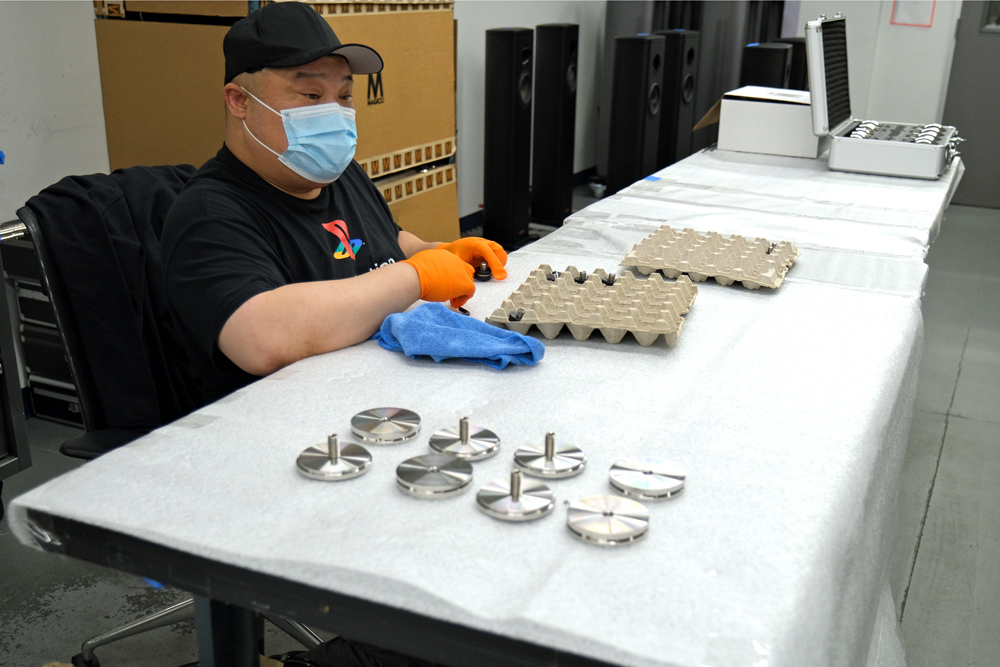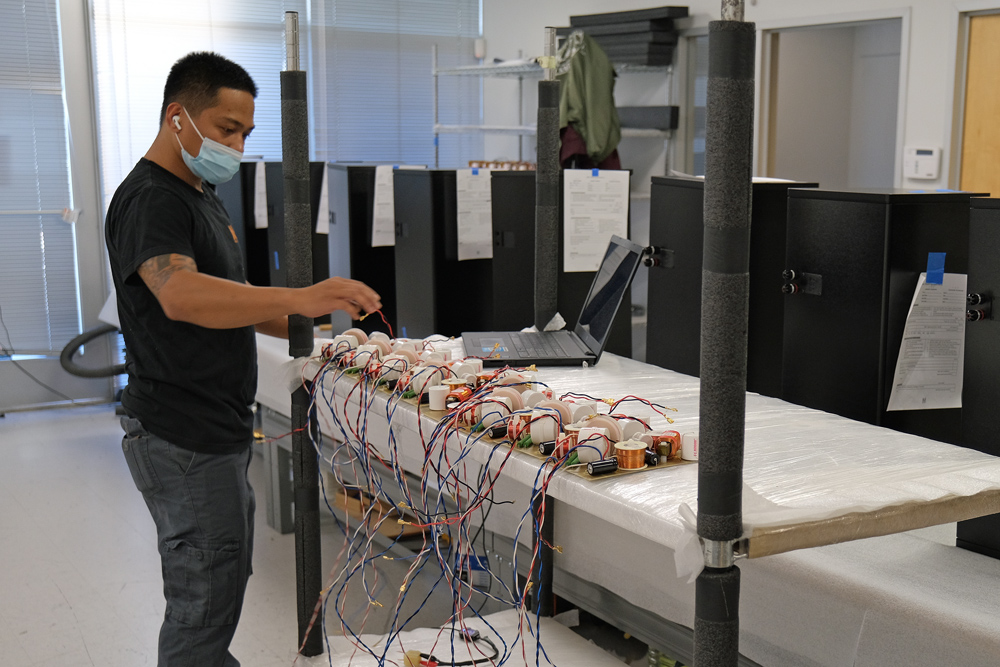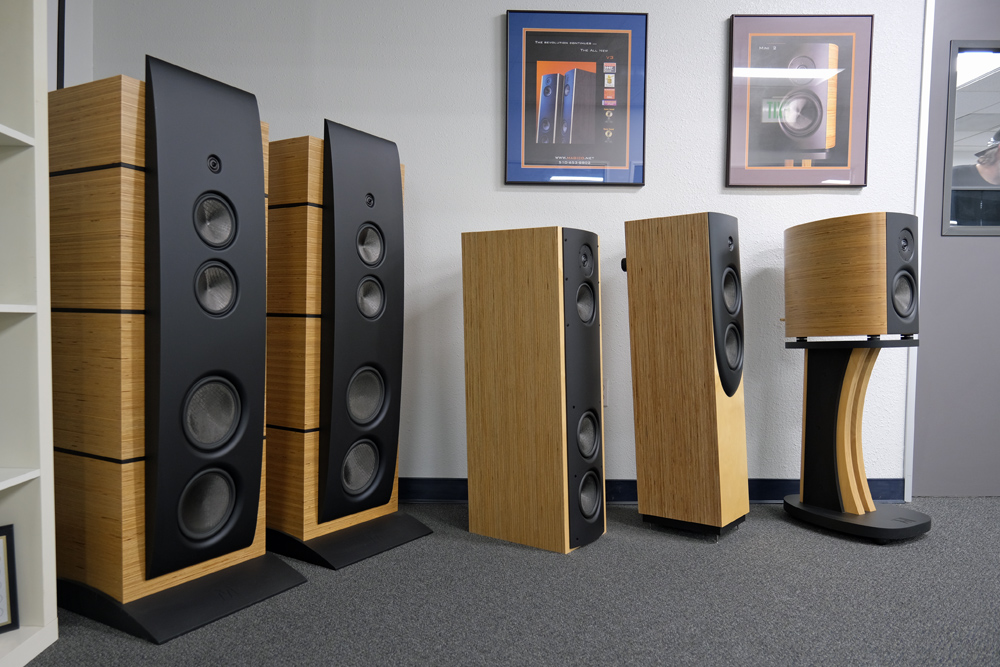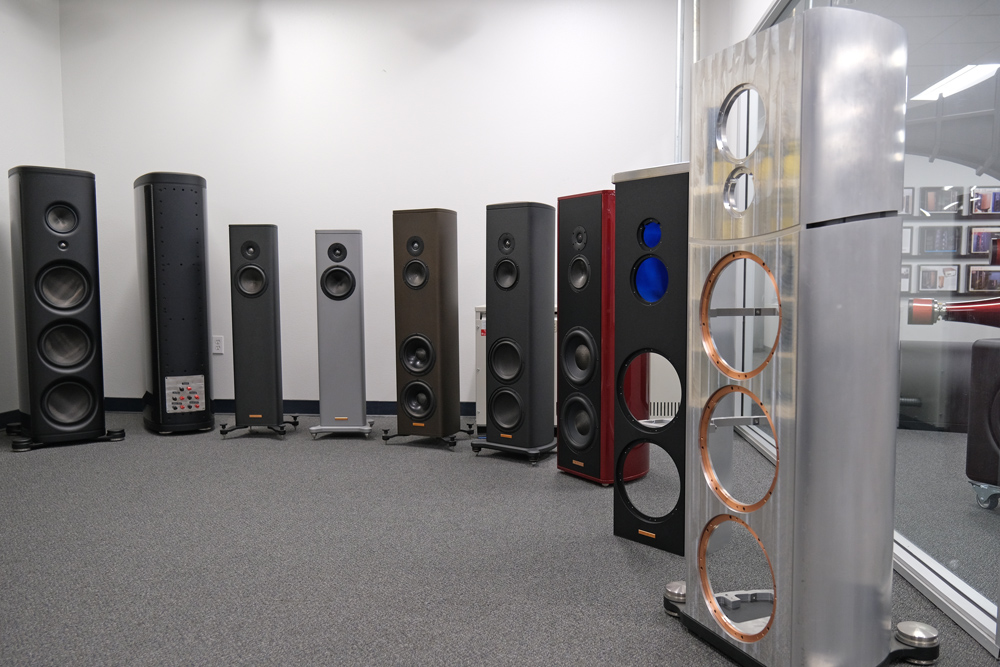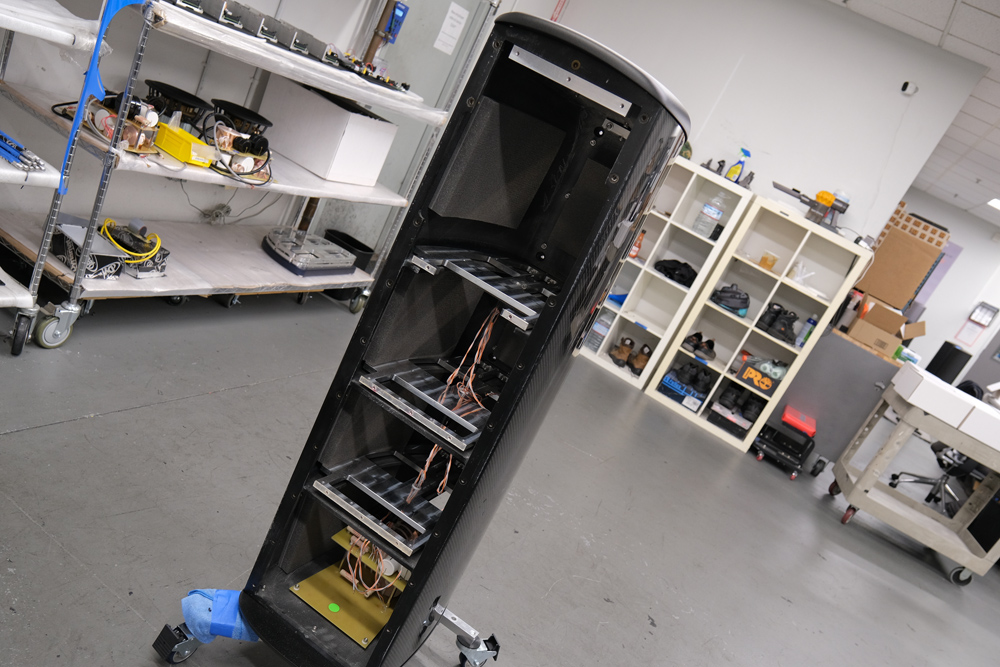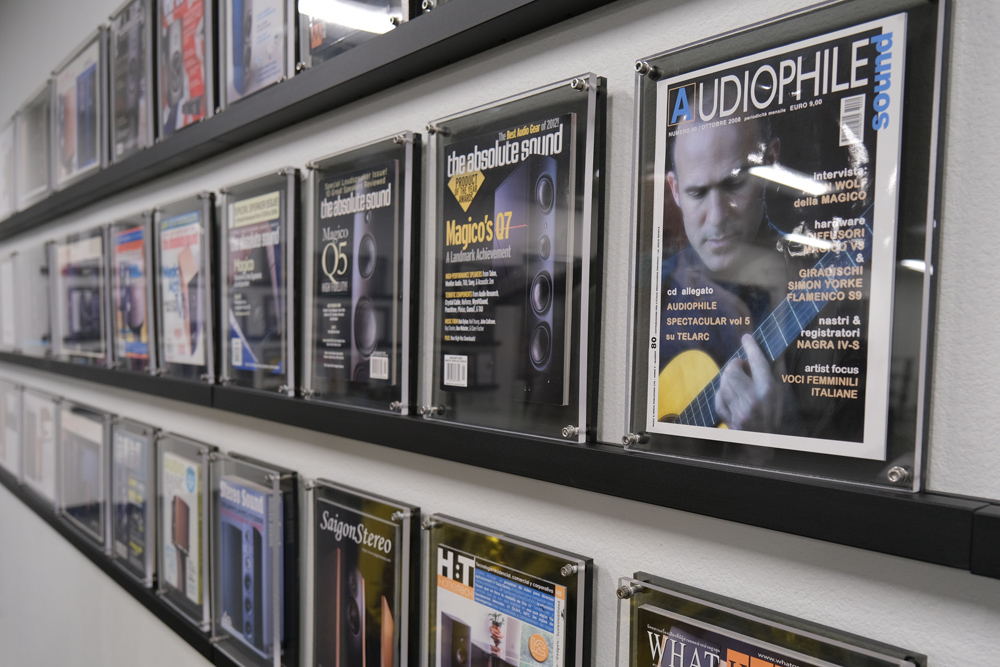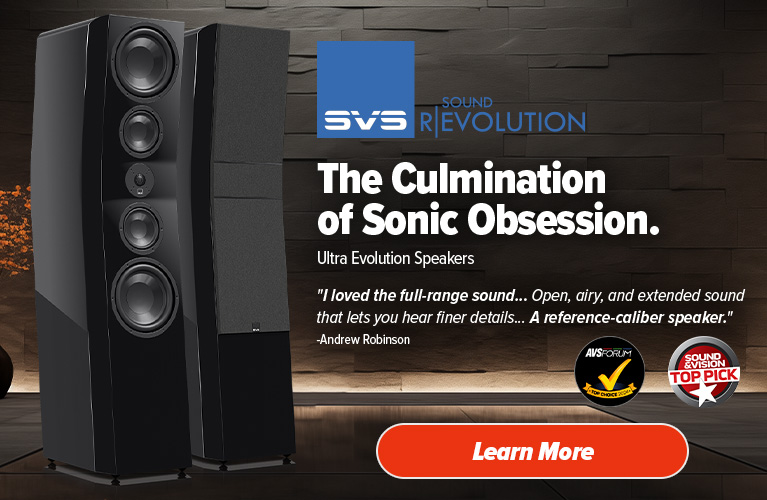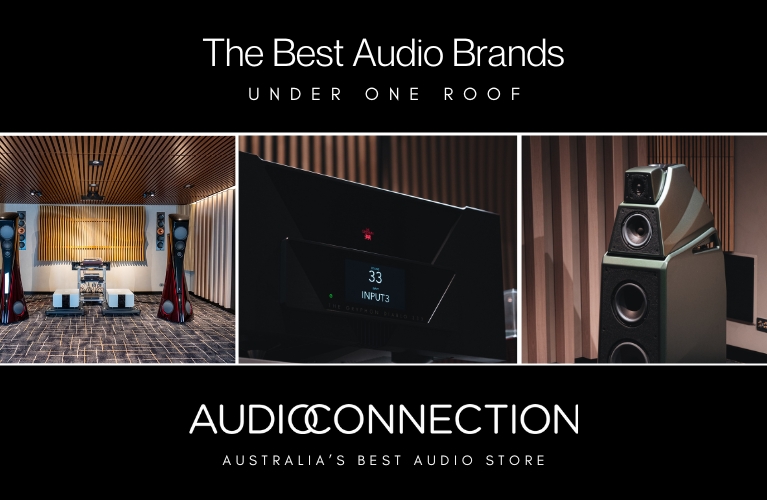They tell me it’s a dry spell in San Francisco. More of a drought really. So as the aircraft descends without slipping through the lightness of a single cloud, I land at SFO International Airport, having trekked from Sydney via a quick Honolulu gate-skip. As I lean on the wall of the window seat, I’m bathed by a Californian sunshine which I’m told has dried-run for months. A contrast from the endless webbed feet-producing deluges in Sydney. The purpose of my visit? A surprise invitation, weeks prior, from Alon Wolf Magico LLC’s CEO to experience the ideologies and activities at the company’s HQ. And to be blissed-out by a very special musical treat…
“No Accountants Here…”
My Tesla Model 3 Uber drops me at an industrial estate in Hayward, out the front of a large almost unmarked building. Only a relatively small company logo on the unit’s front door gives the game away. I’m at Magico HQ.
I enter a large central space. Like a European town square, the perimeter is peppered with offices and smaller ancillary areas. The eye-striking Magico Ultimate horn speaker dominates by its sheer majestic presence. A wall showcases print and website magazine covers and images while a small adjacent space exhibits legacy and current Magico speakers.
I’m ushered into a boardroom and within a couple of minutes, I’m joined by Magico LLC’s CEO Alon Wolf. Almost immediately, we enter into a vigorous chat running us through a melange of topics and, naturally, landing us at the audio industry. Finally, the next convo excursion puts us square into Magico territory – from its inception to the status quo.
That aspect of our conversation started with a simple and quite striking statement by Wolf, even if, of course, it was a rhetorical one: “There are no accountants here at Magico, we do things without worrying about cost”. As grandiose as that may have sounded, what Wolf was articulating, as he held a most impressive driver belonging to a Magico entry-series A3 speaker, was that when developing technologies and design aspects of Magico products, cost is not in the foreground equation. At least not at the conceptual and design stages.
I’ll give it to him. That A series bass driver was one of the most impressive transducers I laid eyes on. That of course, was a precursor for what I was soon to appreciate via componentry belonging to S and M series. More on that later.
As engrossing as our banter in the boardroom is, we are both itchy to start the tour – Wolf, in order to proudly illustrate the Magico story and, myself, for the appeasement of a curious appetite to learn more of the same.
Magico has actually been at this 30,000 square foot facility for around nine years. The various departments’ ordered and well-established organisational systems are signs of both a thorough management and a skilled and dedicated workforce. The first area we visit is a space purely dedicated to Magico’s Klippel NFS robotic '3D Scanner', a very specialised and highly advanced near-field measurement and testing system from Germany. Wolf is extremely proud of owning Klippel and he tells me Magico is only among a very limited group of companies employing the system, with select others being Sony, Yamaha and even Amazon and Google (my subsequent online research found a couple of other major loudspeaker manufacturers, both high-end consumer and Pro audio, employing the system).
In order to demonstrate Klippel’s R&D, design and measurements powers, an A3 is tethered to an elevated platform on a motorised rig. Controlled by Electronics Technician Martin Reynolds, the automated system robotically cycles the measuring microphone through various axes and distance points. I’m told, typically, up to 3000 measurements are conducted per loudspeaker for subsequent interpolation and response analysis. Wolf explains further:
We can analyse what the speaker is doing down to 20 Hz. You cannot do that in an anechoic chamber. Even if you have a chamber which is big enough to support 20 Hz, it would take you months to take all those measurements and then add them up… it’s unthinkable. Even at Canada’s NRC, that chamber goes down to 150 Hz – you can’t see what’s happening. Here, we can see on-axis and around 360 degrees off-axis which can be more important than the on-axis. We do the measurements in 12 to 24 hours, depending on how many points we want to create. Processing takes another 20 to 30 minutes and we get a plot of what the speaker is actually doing. I’m not aware of any high-end loudspeaker manufacturer who operates this system. And I don’t know why. Without it a design is… a very tailored performance.
If you’re designing a 3-way, you need to see what’s happening around 300 Hz and you need to see down one or two octaves below that, so you can have a good summation. Then if you’re doing a 4-way, where your bass driver comes in at 120 Hz, without a system like Klippel, you’re completely in the dark. This is a huge leap. To be transparent about what’s happening. Klippel does takes a deep base of knowledge and it’s a full-time job. It’s an investment.
The man charged with the full-time job is design genius and CTO Yair Tammam, who juggles that… umm, light task, with the countless other aspects of loudspeaker design he undertakes in tandem with Wolf. The word full-time is indeed applicable here. Each driver takes almost a day to fully study so, as Wolf tells me, in a four-driver design like the A3, for example, the measurement/analysis task takes just about a full working week. The payoff, of course, is a better than anechoic-standard set of tests which shows a measured frequency response down to 40 Hz with a superbly-tight 0.5dB to 0.75dB error margin – “Quite spectacular” as Tammam asserts.
Tammam has rung-in remotely – he’s based in Israel – to run me through some of the benefits of the highly-sophisticated Klippel system which has such a profound influence on Magico designs. I’m told that not only each driver is fully Klippel-measured but then, based on the data gathered, the speaker is fully re-measured with the crossover design in-situ. The crossover itself goes through its own virtual environment design process prior to inclusion in Klippel’s final testing stages. It’s an extensive – and intensive – process which requires patience and attention to detail in addition to deep loudspeaker design expertise.
As Tammam shows me via the remote link, the example speaker featured a mind-bending 2594 measurements. He further explains:
The issue here is how to measure a speaker in a room down to 20 Hz in an anechoic way. The second issue is to be able to make a large set of measurements automatically. With the automated system we have a very effective way to get the overall measurements of a speaker which includes all the directivity, all the measurements from all angles and at different distances. Those sorts of measurements in an anechoic chamber, given you have access to one, would take at best, two weeks given no errors. And the movements, the changes, the comparisons of different sets of measurements, even in a controlled environment… it’s a nightmare.
If for practical reasons you are unable to make a lot of tests, a lot of samples, then your ability to make changes is limited. You go down in the number of measurements, you go down in the number of variations, all of this in order to meet reality. This tool, for us at least, is a game changer.
I’m given a demonstration of the robot rig as it moves the test microphone across several positions subsequently recording test tones. My discussions with Tammam encompass such pearlers as measurement envelopes/cylinders, outer and inner layers, separated room and speaker behaviour (this is super-important), radiation patterns and a whole lot more. On a personal level, Tammam’s insights serve to usefully broaden my own limited knowledge of loudspeaker measurement theory.
Of course, we only scrape the surface – with a very fine razor blade shaving, mind you – of both what the Klippel system is capable of and Tammam’s depth of engineering expertise. We end up going through a variety of graphic plots on the laptop, each showing in detail speaker behavioural features with the room eliminated as if in an anechoic chamber. I know enough about this to basically get me into trouble, so I was super-impressed with what I saw. Tammam, Wolf and Klippel make a loudspeaker design power partnership.
Interestingly, the scarcity in uptake of this system in the high-end space where large loudspeakers are common, has seen Magico and Klippel working closely in a cross-pollination of engineering experience. It’s somewhat of a two-way street. Klippel receives an insight into the challenges of designing large high-end speakers, with the data and experience, in turn, refining the measuring system to Magico’s benefit.
Just prior to moving on to the next department, in the same location as the Klippel robot, I’m demonstrated an exercise employing the Laser Vibrometer (LV). A single A5 speaker is fed signals at various frequencies (in this exercise between 20 Hz and 5 kHz) while the LV correlates the velocity of multiple points and SPLs within a specific 2-Dimensional grid on the A5’s front baffle. The LV measures potential problem areas – within millimetres of each other – in the cabinet’s construction, providing invaluable information on how to treat and/or control vibrational distortions and cabinet ‘noise’.
The comparison between the A5 and an MDF cabinet from a well-respected, science-based loudspeaker manufacturer’s upmarket model showed eye-opening differences in the superiority of the Magico’s enclosure integrity. Yes, thoroughly inert cabinets are expensive to design and build.
The LV is another tool which is indispensable and one which has been invaluable in creating Magico’s highly-envied reputation for some of the very best enclosure construction in the industry.
Precious Metals & Carbon Footprints
As we move across to the next department within the factory we come upon a large open area where Magico produces a wide variety of cabinet segments and ancillary parts. At the time of my visit, these CNC machines were tasked with fabricating S series panel sections and aluminium parts.
From there we move to a parts depository where countless aluminium components and parts are stored in readiness for assembly. Magico is a proponent of aluminium as the preferred enclosure material – barring the flagship M series which combines that with carbon fibre. Steel is used for ancillary parts such as some bracing and support systems. Of course, the company is well aware of the ringing the metal components can suffer if not dealt with. To that end, Magico applies resonance control materials which are applied to a variety of the metal components. A demonstration of a treated and non-treated metal rod – as used to couple the drivers’ rear to the speaker’s back panel – was telling. From a ring-like-a-bell to a dead-as-a-rock sonic difference.
Even more ambitious resonance control is applied to the various enclosure panels of all the models. I’m shown a very dense and heavy mat-like material derived from the aerospace industry which is sandwiched between aluminium panels, or aluminium and carbon fibre panels, to completely obliterate any ringing, resonance or detrimental distortion – either acoustical or vibrational.
Various other areas were part of the tour where parts are collected for assembly. I also saw workers taking great care in polishing parts and speaker panels – presentation and attention to detail is of great importance at Magico. Wolf shows me an M6 top panel. The thing is not only super-accurately curved in a perfect arch but its façade is faultless, pure textural smoothness.
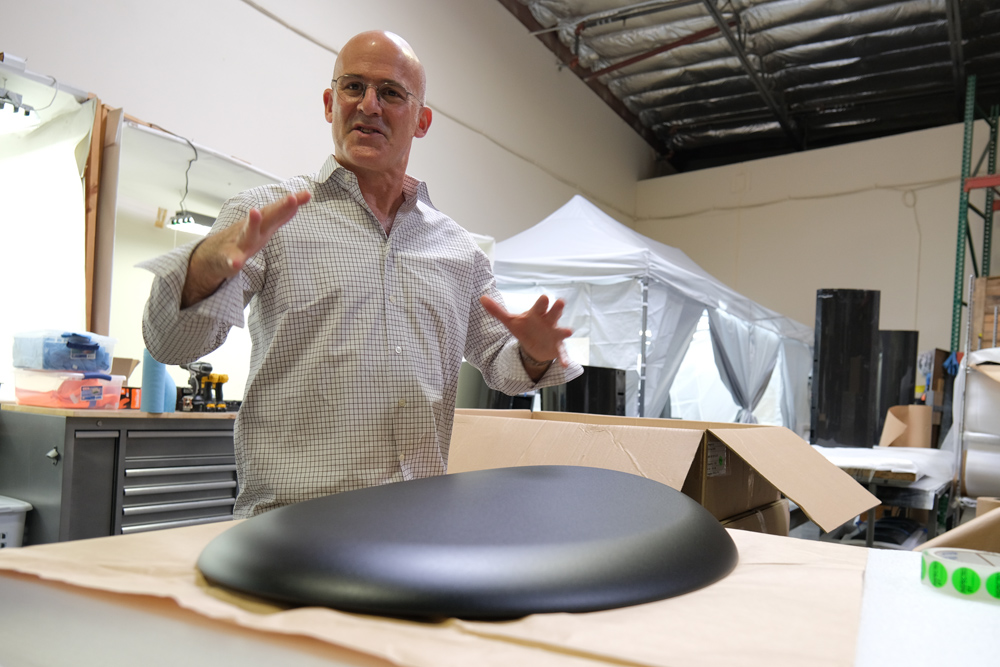
We then shuffle across to an in-house studio with a backdrop set. Wolf tends to do a lot of the product photography given his artistic background. While overkill, he uses a very expensive and massively pixel-ed Red camera system with cine lens. That quality theme again…
We walk past a couple of storage areas peppered with semi-assembled enclosures, crossovers laying-in-waiting and a wide variety of drivers yet to be mounted. Then, going further, we enter a large warehouse. Here, Magico stores crated products which are stacked high on industrial shelving. At floor level, a group of pallets loaded with wooden crates are secured, wrap-prepped and readied for shipping to all corners of the world.
“A Hole in the Bucket”
Back in the Magico boardroom, we turn our conversation to subjects around the Magico ethos on loudspeaker design. Wolf has strong views on all the aspects of design and engineering of the company’s products. He is particularly proud of Magico’s implementation of what are, by any measure, top-shelf driver technologies.
Magico’s transducer materials, magnet designs and voice coil geometries are at the leading edge of the industry. I’m shown an A series driver which has just about the largest magnet motor I’ve seen on a 165mm transducer. This is, evidently, a superbly-built driver, belonging to the entry-level loudspeaker line which, aside from the massive neodymium magnet system, it also features what is, for a 6 inch driver, an immense voice coil (it would have been about 4 inches or larger), and a multi-layer carbon fibre/’XG’ Nanographene sandwich diaphragm. High tech materials are important to the Magico design philosophy.
In fact, Wolf goes on to tell me all the drivers in Magico’s lines are designed for specific functions, meaning most are exclusive to any given model. Of course, they are not off-the-shelf transducers. They are made specifically to Magico’s own design parameters arrived at by Yair Tammam. And as you go up through the ‘S’ and ‘M’ series, the materials and over-engineering becomes more… extreme. Diamond-coated beryllium tweeters, alternative permutations of graphene/Nano graphene, all-manner of neodymium configurations and much more.
Impressive too were the Magico Titan 15 inch subwoofer drivers I came across just prior to entering back into the boardroom. With an optimised aluminium cone, a truly massive magnet system, in-built 2400 watt amplification and thoroughly-applied DSP, Titan would be powerful enough to bring down the walls of Jericho and deep enough to incur the ‘Brown Note’.
Wolf had strong opinions on the merits, or in his view the lack of, of time aligned designs. He admitted there are a few companies that do it properly while most who say they do actually don’t. Barring time alignment via DSP which is a different topic altogether, the mandate for a time-aligned design is the requirement of first-order/6dB per octave crossover design and the necessity of employing high quality drivers. The drivers have to then be physically aligned at their acoustic centres. They’re required to operate way beyond their crossover points while being free of non-linear distortions or break-up modes. The electrical signal has to be aligned as well and the taper of the driver has to be exactly 6dB per octave.
Wolf also pointed at the resulting complexity of the crossovers, “some are the size of this table”, in order to deal with driver break-up, beaming and distortion. It requires using a wealth of components which, as he puts it, “purity is out the window, you can actually hear it”.
Wolf and Tammam are also unwavering, in terms of design, when it comes to Magico speakers’ low-end bandwidth. The bass frequencies’ operation in relation to the partnering enclosure topology demands all of Magico’s speakers to be sealed designs. As Wolf suggests…
I took care of the bass for you. Just push the play button and give yourself time because it’s all there, just not pushed in any way onto you. Yes, to start off the bass may not bombard your stomach. With those speakers, you get them to your room and the bass is untenable. Then you start changing your amplifier, cables and so on. I experimented with reflex porting in the early days but I understood that’s a hole in the bucket, as my physics teacher put it. It presented problems that I would not be able to resolve or live with. There are group delay issues which extend quite high, by the time you roll-off the port you’re right into the mid-bass… a reflex port will never be as pure or transparent as a sealed design. Plus the drivers that are out there are not designed to work in a sealed enclosure. It’s a completely different design and very costly. We have the privilege of designing our own drivers, they’re specifically made to be in a sealed environment and it makes a big difference. Having said that, it’s not going to be as efficient as a reflex design. In the way we perceive sound, a port is a changing EQ.
My aim is to forget about the system. If I can’t forget about the system I can’t enjoy myself. How do we get the system out of the way? I know it sounds like a cliché but it’s true. That’s what Magico speakers aim to do.
Quietly Rockin’
The last phase of my visit to this outstanding company entails a listening session in Magico’s purpose-built listening room. The room has been built to the highest standards and, as we stand just outside the entrance, Wolf tells me, “you want to keep the bass inside, you don’t want it escaping and then you need to absorb it inside”. He explains the walls are five inch sheetrock with metal studs, reinforcement plates and QuietRock panel insulation – an extremely stiff structure which is basically “a cage” as Wolf puts it. The inside is built “with a huge amount of space which is used as a bass trap with substantial acoustical treatment for the rest of the spectrum. It’s mainly diffusion in our case to ease out the reverb or RT level.”
As I enter, I’m awe-struck by one of the most imposing loudspeakers I’ve set eyes on. Yet they’re quite beautiful… Wolf’s industrial design skills showing off here. The many images I’ve seen are a pale facsimile of reality. The M9, Magico’s über flagship, is a towering monolithic construction in celebration of high-end audio. Cliché warning: this is, undeniably, a state-of-the-art loudspeaker design. And it’s supported by a magnificent collection of high-end electronics and cabling.
- Sources: Taiko Audio and Antipodes Audio streamers plus MSB Technology DAC
- Amplification: Pilium preamplifier and four monoblocks in bi-amplification configuration
- Power & Accessories: AudioQuest Niagara 5000 and Telos Earth Grounding Monster
- Cables: VYDA Laboratories signal and SOtM ethernet
Wait, did Wolf say something about eliminating the room? I’m sure he did. This an amazingly well-controlled environment. It allows music to play in an acoustically uncoloured way, whether it be an M9 or an A1.
Wolf is a competent DJ. He plays all sorts of music and, as wide as the variety of genres are, there’s a common theme here – it’s a montage of truly life-like performances delivered with a sense of power, detail, soundscape, scale and dynamic expression which is almost overwhelming.
There’s a level of precision and control which goes beyond anything I’ve ever heard to this day. Everything is precisely balanced. Nothing overrides or suppresses. Music is played as though musicians are naturally conjugated. There are no deficiencies nor peripheral excesses. The performance takes place in the room while, seemingly, I’m simultaneously transported to the studio or concert hall… to the origin.
Yes, the M9 has smashed into the resonant halls of my memory banks. It slammed its way to the upper echelons of my hi-fi listening experiences. It'll remain there, etched in permanence.
Conclusion
In the last remaining hours in San Francisco, as I make my way from the Hilton to SFO airport, I think about the day at Magico LLC’s HQ. I value the time Alon Wolf and Yair Tammam so generously afforded me. They partner in a collective passion for excellence manifested by a shared desire to create truly extraordinary loudspeaker systems. Like with any competitive enterprise, the unavoidable realities of budgets and price points are paid due mindfulness but denied obvious restrictions.
So as the Hawaiian Airlines A330 stretches and lifts to the skies above the ‘City of Fog’, I think about music, the M9 and one of Alon Wolf’s parting remarks – “in the high-end, sometimes the angels do sing to you…”
… Edgar Kramer
This email address is being protected from spambots. You need JavaScript enabled to view it.
Australian Distributor: BusiSoft AV
+61 3 9810 2900
www.busisoft.com.au
Magico LLC
3170 Corporate Place
Hayward CA 94545
+1 510 649 9700
www.magicoaudio.com

